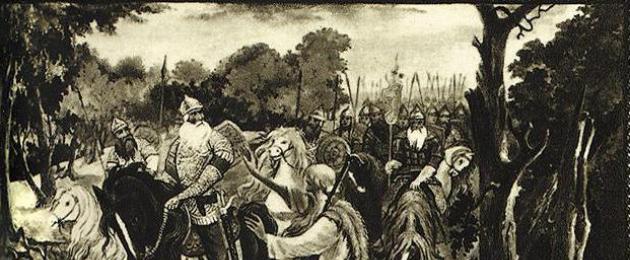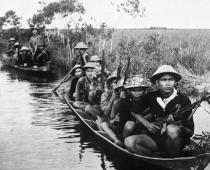Oleg Novgorodsky usually begin to deduct the formation of the ancient Russian state. His figure is really significant, because it determined the beginning of a new era, a new era. His life, like his death, has many mysteries for historians. But still, Prince Oleg the Prophet, whose brief biography will be discussed below, is a rather interesting personality for researchers and ordinary lovers of antiquity.
Appearance in Russia
Biography of which we know only briefly, is considered the founder of the Old Russian state. He was a relative of the legendary Varangian Rurik, that is, he was the brother of Efanda, the commander's wife. It is believed that he was an ordinary governor, whom the Viking immensely trusted. Otherwise, would he have ordered him to take away his young son? It is worth assuming that Oleg acted in agreement with Rurik, and maybe he had a certain freedom. One way or another, but rather quickly, he took possession of Smolensk and Lyubech, and then Kiev. By the way, the golden-domed city was captured by him by cunning: the Varangian lured out of the walls (who were also probably Vikings) and killed them, declaring himself a prince.
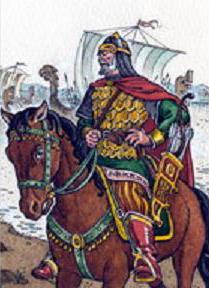
Achievements and successes
Prince Oleg, whose biography is discussed in this article, strengthened his power either by enlisting the support of the Slavic tribes neighboring Kiev, or by conquering them. He established a tribute for them, which did not greatly burden the people. But his military successes were really impressive. Campaigns against the Khazars saved the Russian lands from the need to pay polyudye to the Khaganate. The great Constantinople fell, on the gates of which, according to the chronicle, the prince nailed his shield. As a result, Russian merchants could trade with Byzantium without duties and receive all kinds of support from it. Thus, Prince Oleg the Prophet, whose brief biography is discussed above, has more merits to Russia than Rurik. Moreover, almost nothing is known about the ancestor of the princely dynasty.
Hike to Tsargrad
Prince Oleg, whose brief biography is covered in the Tale of Bygone Years, is an outstanding personality. He organized the famous campaign against Constantinople, after which he received his nickname - Prophetic. The chronicle says that he sent a huge army to the city on two thousand boats. Each boat contained four dozen vigilantes. The emperor ordered the gates of the capital to be closed, leaving suburbs and villages to be torn apart by enemies. But the prince of Kyiv ordered to attach wheels to the ships, on which the army reached the gates of Constantinople. The Byzantines were at a loss, so they surrendered, offering Oleg a generous tribute and peace.
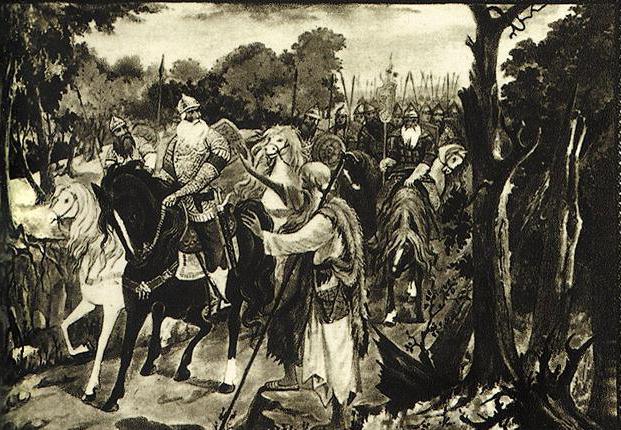
Was there a trip?
Prince Oleg, whose brief biography can be found in almost every history textbook, is a controversial figure. Researchers have more questions than answers about his life. For example, the fact of a campaign against Byzantium seems unreliable. This is because the authors from Constantinople described in detail all the attacks on their country, but they do not mention Oleg's campaign. In addition, the return of Oleg and Vladimir the Great from Constantinople are very similar. Perhaps this is a description of the same event. At the same time, after Oleg, Igor also went to the southern city, who also won. This is also stated by European authors who chronicled those years.
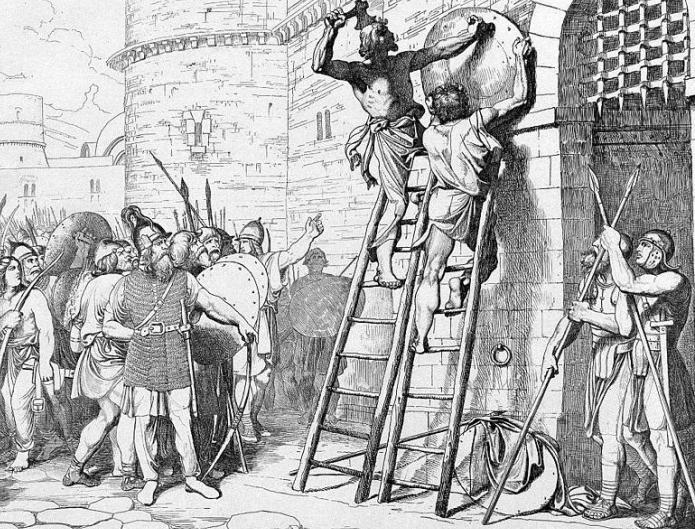
Was there a snake?
Oleg, whose biography is also known from literature lessons, died as mysteriously as he appeared in Russia. In the same one, it is described that once the sorcerer predicted his death from his beloved horse. The Varangian was superstitious, so he sat on another animal, and entrusted his pet to the servants, ordering him to take care of him until his death. The ruler remembered him during the feast, but it turned out that the horse had died long ago. Saddened by his beloved and angry that he believed the Magi, the prince went to the bones. But when he stepped on the skull, he saw a snake, which immediately stung him in the leg. Oleg died from poison.
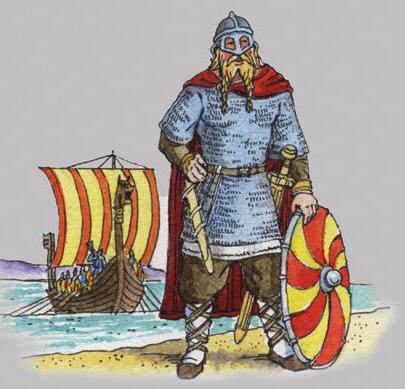
Prince Oleg, whose biography has long been studied, could die another death. And the legend of the horse and the snake may have been borrowed from the saga of Orvard Odd. Although some scholars believe that the hero of Scandinavian legends and Prophetic Oleg are one and the same person. But there are several facts that allow you to think about whether the story about the death of the prince could be true. Among them are the following:
Could a snake bite through a leather boot worn in Russia? Most likely not, or did Oleg come to the mountain barefoot to the horse's bones?
But what if the snake jumped and bit the prince above the tops of his boots? But on the territory of Ukraine there are no such vipers!
As a rule, the snake, before stinging, hisses and tries to crawl away. Could Oleg or his entourage not notice this?
Alternatively, the prince died from poison, but the snake was slipped on him on purpose or Oleg was poisoned in advance. Unfortunately, it is impossible to establish where the truth is.

Some more interesting facts
The Russian prince Oleg, whose biography is already known to the reader, is mentioned not only in the annals of Kyiv and Novgorod. Al-Masudi (Arabic author) speaks of the unsuccessful campaign of the Rus (500 ships!) on the forehead with Olvang and Al-dir against Persia. They gave part of the booty to the Khazars, but the latter betrayed them and killed everyone. About thirty thousand warriors died there, and those who retreated beyond the Caspian were killed by the Volga Bulgars. Thus, the legendary prince died on a campaign, as befits a brave Varangian.
Here he is, smart and warlike Prince Oleg. His biography is full of white spots, because of which an aura of mystery and mystery remains around this figure. Perhaps time will find answers to all questions.
- In contact with 0
- Google+ 0
- OK 0
- Facebook 0

